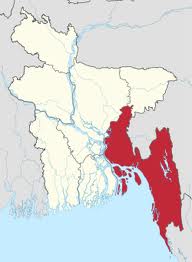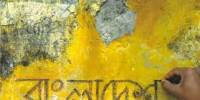Introduction:
Chittagong Division is located at southern part of the country has an area of 33771 sq. km and a population of 23.99. It has 11 districts and 38 municipalities.
Chittagong is the biggest seaport and second largest town in Bangladesh situated near the Bay of Bengal. It is 264 km away east of Dhaka, famous for hill areas, natural beauty and for the seashore. Chittagong is also known of the town of Aulias (Muslim saints).
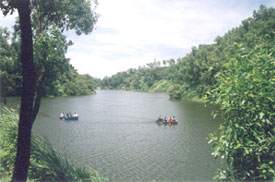
Its green hills and forests, its broad sandy beaches and its fine cool climate always attract the holiday-markers. Described by the Chinese traveler poet, Huen Tsang (7th century A.D) as “a sleeping beauty emerging from mists and water” and given the title of “Porto Grande” by the 16th century Portuguese seafarers.
Chittagong combines remains true to both the descriptions even today. It combines the busy hum of an active seaport with the shooting quiet of a charming hill town.
The Shahi Jama-e-Masjid and Qadam Mubarak Mosque are two of the most impressive buildings in the city. It is also worth visiting the Ethnological Museum in the Modern City, which has interesting displays on Bangladesh’s tribal peoples. There are good views and cooling breezes from Fairy Hill in the British City in the northwestern sector of the city.
Chittagong is the country’s chief port and is the main site for the establishment of heavy, medium and light industries. Bangladesh’s only steel mill and oil refinery are also located in Chittagong.
Major Tourist Spots in Chittagong Division :
Patenga and Fouzdarhat Sea Beaches
Patenga beach is about 22 km. from Chittagong and is approachable by a motorable road. On the way to the beach, one passes the Patenga Airport. Another ideal picnic spot is the Fouzdarhat sea-beach about 16 km. from Chittagong. Patenga sea beach is one of the major attractions of Chittagong for the tourists. Besides the sea beach, you can enjoy boating and river cruise in the River Karnaphuli. You can see the busy seaport activities here.
Shrine of Hazrat Bayezead Bostami
The shrine of this famous saint is situated in Chittagong. This great priest came to Chittagong in 10th Century to spread the religion of Islam. You can also visit the ancient rare variety of Turtles in the Dighi in the Shrine premises. This shrine attracts a large number of visitors and pilgrims. At its base is a large tank with several hundred tortoises. Tradition has it that these animals are the descendants of the evil spirits (genii) who were cast into this shape because they incurred the wrath of the great saint who visited the place about 1100 years age.
War Cemetery
Second World War warrior’s graveyards are in this Cemetery. There are 755 graves in this graveyard of the great warriors who died d in world war from1939 to 1945 in Chittagong areas. In this well-preserved cemetery at a quiet and picturesque place within the city lie buried in eternal peace over 700 soldiers from British, Australia, Canada, New Zealand, India, Myanmar, East and West Africa, The Netherlands and Japan who laid down their lives on the Myanmar front during the World War II. Every year a number of tourists come here to visit this Cemetery.
Port Area
Located near the river mouth of the river Karnaphuli, the Chittagong port has a recorded history from 9th century. Today, this is the principal seaport of the country.
Cox’s Bazar
Cox’s Bazar is one of the most attractive tourist spots & the longest sea beach in the world (approx. 120 km long). Miles of golden sands, towering cliffs, surfing waves, rare conch shells, colorful pagodas, Buddhist temples and tribes, delightful seafood–this is Cox’s Bazar, the tourist capital of Bangladesh.
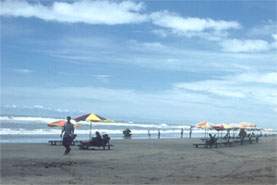
The warm shark free waters are good for bathing and swimming & while the sandy beaches offer opportunities for sun-bathing.
The beauty of the setting-sun behind the waves of the sea is simply captivating. Locally made cigars and handloom products of the tribal Rakhyne families are good buys.
Every year lots of foreign & local tourist come here to spend their leisure in Cox’s Bazaar. Though the season is in winter but Cox’s Bazar sea beach is crowded almost through out the year. Especially in winter season, it is hard to get an accommodation in the hotels if booking is not made earlier.
If you are really adventurous and want to enjoy the wildness and madness of the ruff and tuff Sea you can come to Cox’s bazar in the month of mid April, Sea continue its wildness till August; and its even more exotic if you come to Cox’s Bazar in the time of depression of the Sea.
St. Martins Island
St. Martins Island is the most beautiful Coral Island where you will find live corals. Its only 30 km from Teknaf and you can go there by local motorboat, tourist boats, or sea truck.
This small coral island about 10km (6mi) southwest of the southern tip of the mainland is a tropical cliché, with beaches fringed with coconut palms and bountiful marine life. There’s nothing more strenuous to do here than soak up the rays, but it’s a clean and peaceful place without even a mosquito to disrupt your serenity.
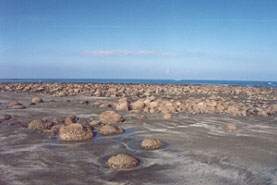
It’s possible to walk around the island in a day because it measures only 8 sq km (3 sq mi), shrinking to about 5 sq km (2 sq mi) during high tide. Most of island’s 5500 inhabitants live primarily from fishing, and between October and April fisher people from neighboring areas bring their catch to the island’s temporary wholesale market.
Himchori and Inani Beach
There are many attractions for the tourists around Cox’s Bazaar. From Cox’s Bazaar Sea shore, you can go to these places by jeep and it is really exotic to drive on the seashore. Himchori is famous for waterfall, though in the winter season it dwindles but during the rainy season it’s really a fabulous and full waterfall can be enjoyed. Inani beach is famous for the rock and coral boulders; you will find big coral boulders in this beach. You can plan a trip to Inani beach via Himchory for a half day or may be a full day sightseeing. Please take packet lunch with you.
Sitakundu
The famous Chandranath Temple & Buddhist temples are in Sitakundu, 37 km for from Chittagong city. Famous among the many temples in this place, the Chandranath Temple and the Buddhist Temple has a footprint of Lord Buddha. These places particularly the hilltops are regarded as very sacred by the Buddhists and the Hindus. Siva-chaturdashi festival is held every year in February when thousands of pilgrims assemble for the celebrations, which last about ten days. There is a salt-water spring 5 km. to the north of Sitakunda, known as Labanakhya.

Moheshkhali Island
It is another attraction for the tourists who go to Cox’s Bazaar. An island off the coast of Cox’s Bazar. It has an area of 268 square kilometers. Through the center of the island and along the eastern coastline rises, a range of low hills, 300 feet high; but the coast to the west and north is a low-lying treat, fringed by mangrove jungle. In the hills on the coast is built the shrine of Adinath, dedicated to Siva. By its side on the same hill is Buddhist Pagoda. You can go to this Island by local motorboat called trawler or by speedboat. By trawler, it takes an hour and a half and by speedboat, it takes only half an hour to reach this Island. You will find mangrove forests, hilly areas, salt field etc. This island is famous for Buddhist Temple and Pagoda; you can enjoy a full day sight seeing if you intend to visit Sonadia and some other Islands nearby. In the morning you can start for Moheskhali, spend time to watch Moheskhali’s tourist places, take lunch there and on return you can visit Sonadia and other nearby Islands where you can sea the live fishing & fishermen lifestyle; By the afternoon you can come back to Cox’s Bazaar.
Nijhum Island
This Island could be the next prime tourist spot after St. Martins Island. It’s a natural beauty of mangrove forests where you will find Dears of specific species and Monkeys. A huge numbers of migrated birds come in this Island in winter season, enhancing the beauty of this Island. The communication is not excellent but if some one wishes to bear the trouble to go to this Island, he will be enchant to see the beauty of this Island. You can go to this Island either from Dhaka or from Chittagong.
From Chittagong first you will to go Hatia Island by Motor boat or Ship and from there you can go to Nijhum Island by local motor boat. From Dhaka you can go Tomzuddion by launch from Sadarghat launch terminal. From there you can go to Nijhum Island by local motorboat.
Parki beach
Parki beach might be the next tourist attraction of Bangladesh, which is situated in Anwara thana under southern Chittagong region.
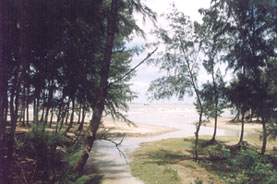
The beach lies 16-17 km away from Chittagong city. As the beach is situated at the Karnafuli river channel, visitors can view both the Karnafuli river and the sea together. Tourists enjoy the views of big ships anchored at the outer dock, fishermen catching fish in sea, sunset, various colored crabs at the beach and quiet environment.
Teknaf
The side of river Naf and the Bay of Bengal situate Teknaf Town, which is the southernmost tip of Bangladesh. It’s a real natural beauty of hills, forest & Naf River. Lots of Salt fields are there by the side of River Naf. There are natural waterfalls in Teknaf, which increases the beauty of nature.
You can come to Teknaf from Cox’s bazaar by an exotic jeep drive besides the Seashore or you can go there by bus or Microbus by road. By road journey, it is 84 km from Cox’s Bazaar.

You can enjoy shopping in the local market called Burmese Market where you will find all the Burmese & tribal hand made materials. Do not forget to see the Well of Ma-Thin – which tells a sad story of love. Myanmar is on the opposite bank of Naf River. Wild animals and birds are available but the most interesting thing is a journey on the river.
Wide sandy beach in the backdrop of high hills with green forests is an enchanting scene never to be forgotten.
Lalmai Moinamoti and Shalbon Bihar
They are famous historical and archeological places around Comilla. These are a series of hillocks, where the Northern part is called Moinamoti and the Southern part is called Lalmai; and Shalbon Bihar is in the Middle of Lalmai and Moinamoti, which the was established in 8th century by King Buddadev. Salban Vihara, almost in the middle of the Mainarnati-Lalmai hill range consists of 115 cells, built around a spacious courtyard with cruciform temple in the centre facing its only gateway complex to the north resembling that of the Paharpur Monastery.
Kotila Mura situated on a flattened hillock, about 5 km north of Salban Vihara inside the Comilla Cantonment is a picturesque Buddhist establishment. Here three stupas are found side by side representing the Buddhist “Trinity” or three jewels i.e. the Buddha, Dharma and Sangha.
Charpatra Mura is an isolated small oblong shrine situated about 2.5 km. north-west of kotila Mura stupas. The only approach to the shrine is from the East through a gateway, which leads to a spacious hall.
Chittagong Hill tracks
Decidedly untypical of Bangladesh in topography and culture, the Chittagong Hill Tracts have steep jungle hills, Buddhist tribal peoples and relatively low-density population. The tracts are about 60km (37mi) east of Chittagong. The region comprises a mass of hills, ravines and cliffs covered with dense jungle, bamboo, creepers and shrubs, and have four main valleys formed by the Karnapuli, Feni, Shangu and Matamuhur rivers.
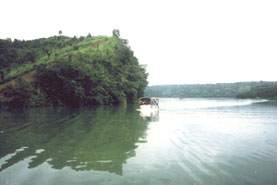
Rangamati, a lush and verdant rural area belonging to the Chakma tribe, is open to visitors, as is Kaptai Lake. The lake, ringed by thick tropical and semi-evergreen forests, looks like nothing else in Bangladesh. While the lake itself is beautiful, the thatched fishing villages located on the lakeshore are what make a visit really special.
Boats that visit the villages leave from Rangamati. Bring your swimming gear because you can take a plunge anywhere.
Rangamati
If you don’t visit Rangamati you will not discover a big portion of natural beauties of Bangladesh. From Chittagong a 77 km. road amidst green fields and winding hills will take you to Rangamati. It is also connected by waterway from Kaptai.
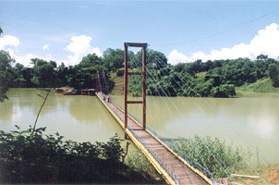
This is the only place to visit through out the year. Rangamati expresses her full beauty in rainy season. Trees becoming greener, waterfalls are in full tide, the river Karnaphuli in her full wave in this season. If you already visited Rangamati in winter, we advice to go there again in monsoon; you will feel the difference of nature yourself.
Ghagrachari
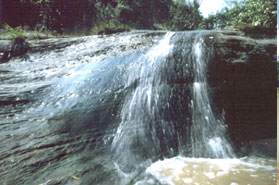
Ghagrachhari is the natural wild beauty of Bangladesh. Here you can visit the tribal lifestyle of Chakmas’ in Ghagrachari. You can also visit Alutila hill. Approximately 100 meters long a very dark Cave is the mysterious beauty of Alutila hill.
Kaptai Lake
Built in early sixties Kaptai Dam and the lake are the main attractions of Kaptai. If you are not visiting Kaptai separately then, don’t forget to go for a boating up to Kaptai on the Kaptai Lake while you go to Rangamati tour.
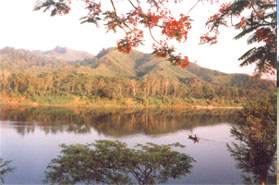
Bandarban

You can go to Bandarban from Chittagong by road. Chimbuk hill is one of the major attractions of Bandarban. You can enjoy the journey to Chimbuk Hill by jig jag hilly roads. It’s the third highest mountain in Bangladesh of approx. 3000 ft height. Reach Chimbuk by jeep or microbus from Rangamati. A beautiful Rest house is there on the top of Chimbuk hill.
